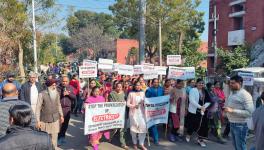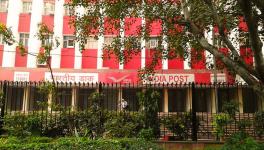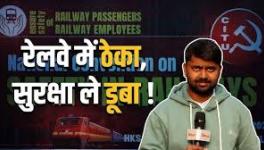Chhattisgarh: Medical Students Recall Harrowing Experience of Return from War-Torn Ukraine
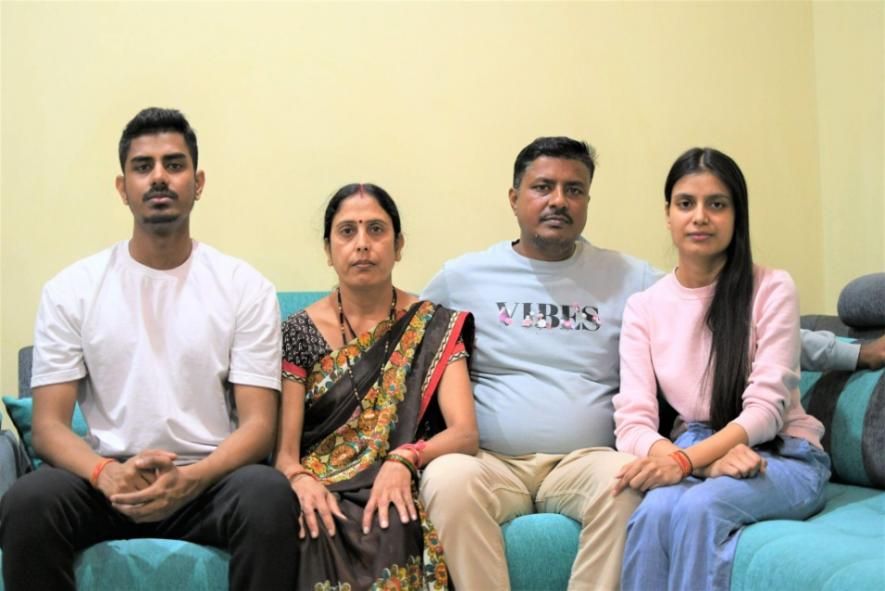
Nihal and Deepti with their parents
Among close to 20,000 Indian students studying medicine in Ukraine, a large number were from the state of Chhattisgarh. So far, 188 medical students, including eight from Bastar, have managed to reach back to the safe confines of their homes after spending highly stressful hours before exiting the country witnessing the most unprecedented war. While the Chhattisgarh government was unsure how many were still stranded in Ukraine, the opposition BJP has put the data to a total of 207 students. This leaves the fate of 19 students still uncertain.
This reporter met some of the students to listen to their experiences, aspirations, and the future they now worry about.
“Returning from war-torn Ukraine was mental and physical agony,” described 25-year-old Deepti Tomar, a final year medical student at Kyiv National Medical University, who reached along with two other students to a boisterous welcome organised by the district level BJP cadres with slogans cheering PM Narendra Modi: “Modi hai to mumkin hai”, rang in the air as the three students staggered out of the seven-hour long drive from Raipur to Jagdalpur.
Both Deepti and her brother Nihal Tomar, also a sixth-year medical student, recollected waking up to the wailing and piercing sound of the siren around 4 am on February 24, when the first air raid took place. Although the Chuhuiv apartment complex that fell target to the first air attack by Russian forces were nowhere near their home, they could see the fire-glow of the blasted building from where they were, described Deepti shaking her head. “Until that day, we had no clue how serious or real the war was getting,” added her 23-year-old brother.
The university authorities and the Indian Embassy gave them no forewarning of the impending danger.
The first advisory from the Indian Embassy was released on February 15 noted the students who this reporter met. Since it advised “temporary departure of students whose stay is not essential”, all the students who had already entered Ukraine stayed back as their stay to complete their education was essential. The sixth-year medical students like Tomars stayed back as they were to have their "Krok exam” (a licensing exam for students to qualify for their degree) in May this year.
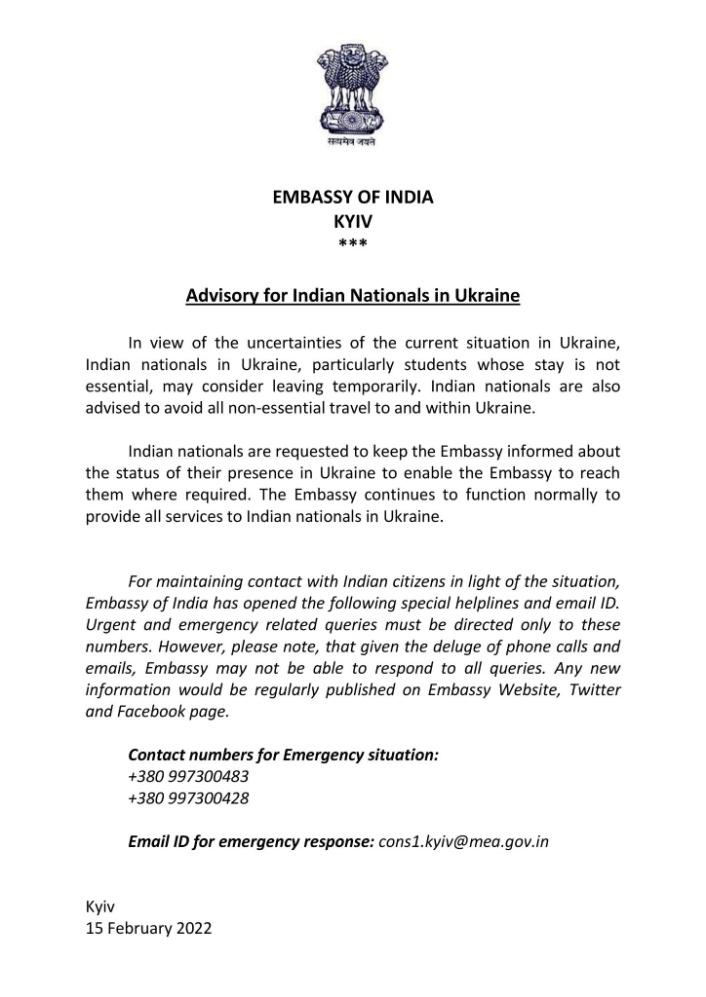
Advisory issued on February 15. Source: Twitter
“My entry into Ukraine and stay was essential as I had already delayed my departure,” said 20-year-old Aman Sarvesh, who was joining in his first year at Kyiv National Medical College. The sessions had begun in September, which Sarvesh could not join due to a delay in his visa, and he was in no mood to delay it any further, certainly not after investing about eight lakh in the first year in addition to spending a lakh and half on visa and ticket. The advisory certainly did not sound alarming, he told himself as he boarded the on February 19 along with nineteen other students.
The second advisory released five days later, February 20, continued to be as vague as the first one, said 21-year-old Amal Pillai, a third-year student studying at Vinnytsia National Medical University, West of Ukraine. “…. all Indian national whose stay is not deemed essential and all Indian students, are advised to leave Ukraine temporarily”, read the advisory. The students were advised to take commercial or charter flights.
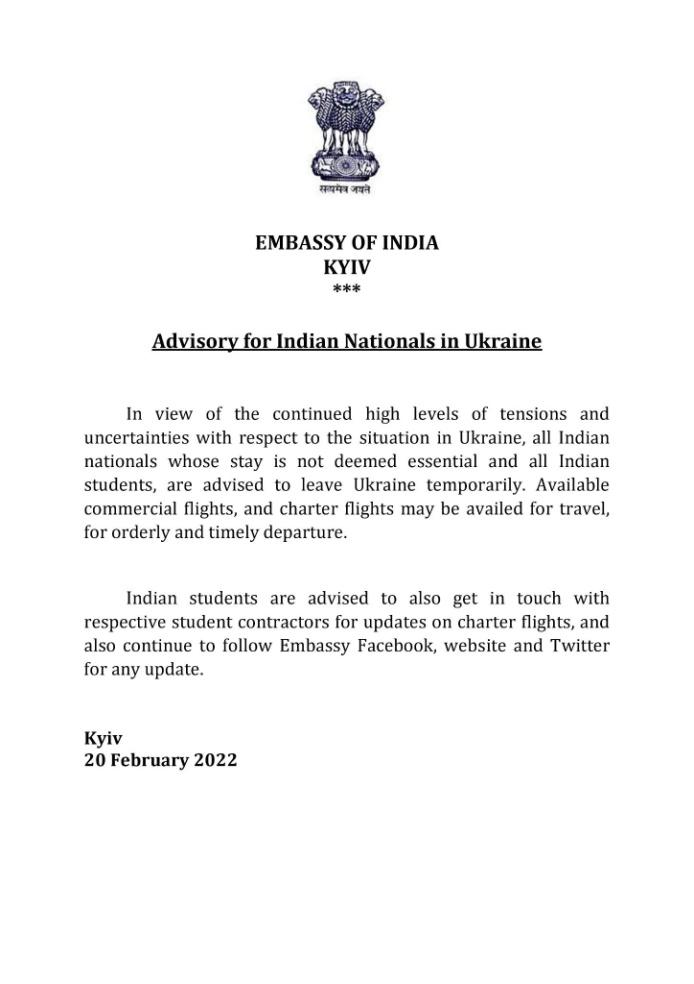
Advisory issued on February 20. Source: Twitter
The University staff, authorised to keep students informed, denied the impending war. “Our University, Uzhhorod National Medical University, continued to maintain even after February 24 that classes could be conducted offline,” said Shalini Shivhara, a second-year medical student from Potanar village, 15 km from Jagdalpur town in Chhattisgarh's Bastar district. She did not get any firm advice from her education agent, who arranged for her study in Ukraine.
Classes at the University were switched between online and offline, making it difficult for students to leave. To add to the confusion, flight charges kept skyrocketing. “The tickets which would cost 30 thousand doubled,” shared the Tomars. At their parents' insistence, they booked a flight ticket to depart on February 29, soon after the second advisory.
But alas, that was too late. After the air raid on February 24, all airlines flying out of Kyiv suspended their flights.
RUSH TO REACH BORDERS
"Alternative arrangements are being made for the evacuation of Indian nationals…" assured the advisory from the Embassy on February 24, asking students to wait for more information and “stay where they were”. The advisory issued the next day assured that ‘evacuation routes were being established from Romania (Porubne-Siret) and Hungary (Chop-Zahony near Uzhhorod)'. Students were also advised ‘to stay in touch with their contractors (agents) for orderly movements’.
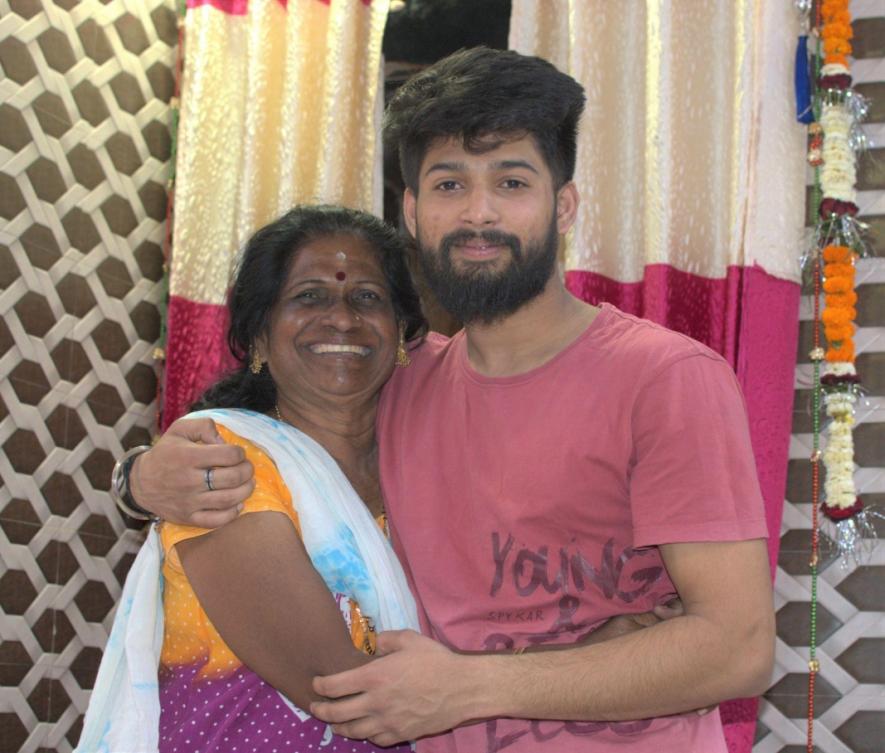
Aman Pillai with his grandmother.
The advisory on February 26 advised students against 'moving to border posts without prior coordination. However, the next day, the tone changed. Indian nationals were asked to find their way to nearby railway stations and ‘move out of regions of active conflict’. The second advisory the same day, i.e. February 27, created further panic as Indian Nationals were advised not to venture towards railway stations until the curfew was lifted.
Confused at the advisories and the escalating situation, Pillai and 25 other students from Jharkhand, Gujarat, UP and Chhattisgarh left their bunkers in Vinnytsia in the morning of February 27, after three days and sleepless nights. "Every two hours, the siren was hooted, and we would rush down to our bunkers from our rooms on the eighth floor, described Pillai. Food and water were depleting, and shops were running out of stock observed the students while venturing out in turns.
Reaching a bus stand after a four-kilometre panic-stricken walk, they negotiated a price of 600 INR per ticket for all the students to be taken to Chop railway station via Uzhhorod town about 300 km to Hungary border. The journey was covered in intense silence. “A crowd of over 5,000 students, mostly Indians, were waiting to be taken by train from Chop to cross over to Hungary in Lonya,” recollected Pillai. Finding it impossible to get onto the crowded train after a wait of five hours, they hired three private cabs to cross over the border, paying 1,500 INR per cab. Once in Hungary, they heaved a sigh of relief until when they were petrified of attacks or not being allowed to cross over, narrated Pillai. At Lonya, they waited for an additional five hours. After their documents were checked, it took three-four hours, at minus two temperature for the Indian Embassy team to arrive to take them to Budapest further to spend a night before boarding flight to Delhi where sloganeering BJP workers met them.
Located on the western side of Ukraine, Uzhhorod, 300 km from Hungary, was relatively safer as it did not come under direct attack, shared Shalini Shivhare, who had reached Ukraine in September to attend her second year at Uzhhorod National Medical University. The hostel where she stayed had about 1,000 Indian students, she estimates.
Piercing sounds of the siren would send them panicking down to the bunkers in the basement. Nearly 200 students were housed inside one bunker, where none slept out of fear. As panic mounted amongst the students clamouring to return to their country, the university arranged a bus on February 27 to take about 250 children to reach Zahonyin Hungary from Uzhhorod,300 km away. At Zahony, after a 6-hour wait for document clearance, where food, water, warm clothes were provided, a bus organised by the Indian government (it had an Indian flag), around mid-night, brought them over to Budapest around 8 in the evening, from where they boarded their respective flights. In Budapest, they met with the team from India, who welcomed them and took them to a hotel for the night stay and to board the flight to Delhi the following day.
PANIC AT THE HUNGARIAN BORDER
The Tomars did not have it so smooth as Shivhare. As air raids began and flights suspended, the brother-sister duo had no option but to make their way from Kyiv on their own. Their tickets for 29th that had doubled to cost them sixty thousand per ticket was of no use. Along with 25 others, they covered about 15 km by foot, leaving their bunkers in Kyiv on February 26 at around 9 am. They reached Bokzalana railway station after one and half hours of panic running 'Jaan hatheli par rakh kar' (holding our lives in our hands) as they saw fighter jets whizzing past them in the sky. At the station, they boarded a train, free of cost, to take them on a 13-hour journey to Lviv, close to the border in Poland and Hungary.
A private cab at the cost of 100 USD per passenger brought them to Chop at the Hungarian border after a six-hour drive. A 20-minute train ride from Chop at the cost of 100 Hryvnia (253 INR) brought them to Zahony in Hungary to bring them further to Budapest after a seven-hour free train ride.
In Budapest, they were met by a team from the Indian Embassy who took them to a hotel provided them with boarding and lodging facilities for the night before they boarded their Indigo flight to reach Delhi.
“Putting us on flights from Budapest or other neighbouring cities outside Ukraine is no evacuation,” said an enraged Pillai.
Acknowledging that the situation was uncertain and unpredictable, Pillai questioned the unwarranted credit the government was taking for evacuating them. At the same time, students brazed for the war to cross over the border at their risk. Pillai was equally enraged at the vague advisories issued, leaving students confused, and left to fend for themselves. "On the other hand, students from America, UK, Japan, Korea and some African countries gave strict orders for their students to leave the country immediately". On February 11, the US Embassy asked US citizens not to travel into Ukraine and asked all citizens in Ukraine to depart.
Nevertheless, several Indian students also decided to return to their country. Universities declared online classes with rising Covid cases in Ukraine in early February and the threat of looming war. Trisha and her friend boarded a flight from Kyiv on February 18 as university classes began to be conducted online. Despite no clear indications from their university or the Indian Embassy, her parents insisted she returns, shared Tisha talking to this reporter on the phone. Flight tickets were already shooting up to fifty thousand, and she reached Raipur on February 19, well before the war broke out.
RETURN TO A BLEAK FUTURE
Although back home safe, the Tomars are extremely worried over their future. They had hoped to appear for the mandatory Foreign Medical Graduate Examination (FMGE) in November in India this year once back from Ukraine after their finals in May.
Third-year student Pillai is also worried about how the coming days will pan out. “We heard Universities in Hungary were willing to admit students in their universities without any loss of the year for the same amount of fee, but not sure how this will work out,” said Pillai hunching his shoulders in uncertainty.
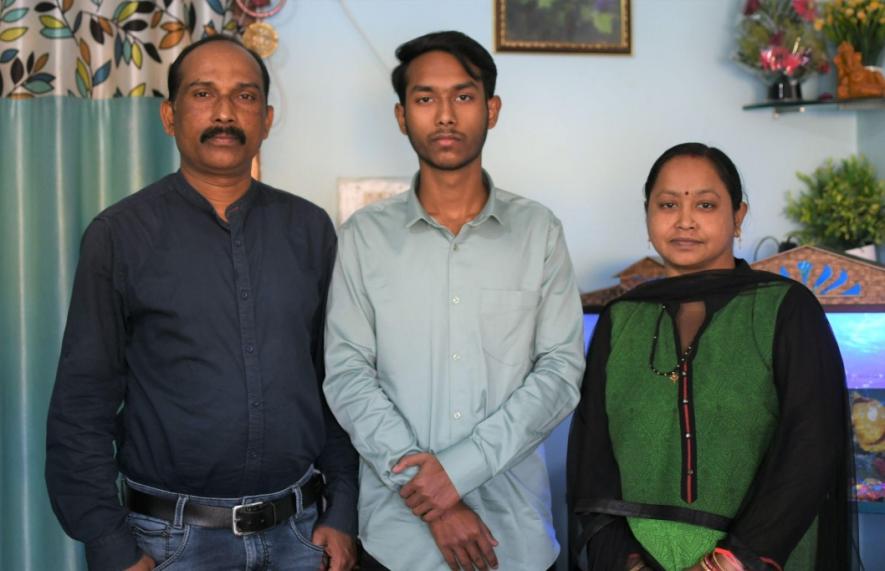
Aman Sarvesh with his parents
Aman Sarvesh had spent two years preparing for NEET and waiting for the admissions in the university in Ukraine and his travel documents to come through. “We cannot simply wait and watch for the situation to settle down as this might take longer. Another year cannot be wasted,” said a determined Nehrudas Shivhare, the father who runs a local business. We will have to weigh several options before we can decide, he added, running his fingers through his hair. “I am glad my son is back, and unless the situation is satisfyingly normal, we won’t let him go, said Vandana Shivhare, his wife, a teacher in a government school.
Many parents have also taken personal and educational loans hoping that their children will reap benefits in the future.
Sarvesh has spent 7 to 8 lakh for his son’s first year; 5.5 lakh was towards hostel and fee and another 1.5 lakh towards visa and tickets, from his savings. He added that an educational loan from the bank is already under process for the forthcoming years. A six-year medical education in Ukraine is estimated to cost about 40 lakh, which is only 40% of what he would have spent getting his son educated in a private medical college in India.
Navneet John, whose daughter, Shreya John, returned early this morning via Mumbai, had to take a personal loan to fulfil the first-year fee of INR 8 lakh. John, too, has applied for an educational loan to finance her daughter's Zaporozhye State Medical University studies. My two children are all I have, said John, a government employee in Jagdalpur who lost her husband seven years ago. This is a huge financial setback, and I am unsure whether the university will repay the money. The loan will have to be repaid in any case, flaying her arms in helplessness. “But my daughter’s return is of primary concern,” she adds quickly, shaking herself to the immediate reality.
‘UNAFFORDABLE’ PRIVATE MEDICAL COLLEGES IN INDIA
‘Opening more private medical colleges is not the answer to dissuade Indian students from studying medicine abroad ’, said an anguished Amal Pillai, reacting to Prime Minister’s appeal to the private sector to invest in medical colleges.
“I went to Ukraine to study medicine primarily because my parents, a middle-class working family, cannot afford to have me study in a private medical college anywhere in India,” he explained, agitated at the thought of having now to spend an uncertain future.
Unable to secure the crucial points in NEET to secure a seat in government medical college, Pillai, like the 207 other students from CG, was forced to look at options outside the country to fulfil his aspiration to become a doctor.
Echoing Pillai’s sentiments, Dr G (name withheld on request), who works with the Community Health Centre in a small town in Chhattisgarh, said the number of students rushing to do medicine in East European country has increased manifold, as one can complete the 6-year medical course at nearly one third the cost in a private college in the country. Dr G completed his medicine at Crimea Medical University in 2018. In 2014, Dr G faced similar instability when Crimea went through a public referendum. The classes were suspended for eight days before resuming normally, he added.
The number of years one invests in a foreign university is also more, explained the doctor. “What would have taken me five and half years to start as a practising doctor had I studied in India took me 7.5 to 8 years, including the clearance of FMG as well as the mandatory one-year internship all foreign-educated medical students must undergo.
Chhattisgarh has ten medical colleges. Seven are government colleges with close to 1,400 seats, which is extremely low to fulfil aspirations of students desiring to qualify as doctors, argued the government doctor. An increase in private medical colleges with unregulated tuition fees and donations will have no impact on the departure of medical students, he continued.
“We hope the governments – both the Central and state governments – find some way of ensuring completion of our children’s medical education by granting them a seat here in India,” said Shersingh Tomar, whose children, Nihal and Deepti were at a precariously critical stage of completion.
“We are willing to spend the same amount of money within the country if our children can complete the education here in the country instead of risking it outside," said an exasperated Nehrudas Sarvesh, holding his son’s hand.
Most students hope to resume their classes online in another week, as promised by their respective universities, but we know the situation is uncertain, added Sarvesh.
Chhattisgarh government is currently facing a shortage of 1,047 doctors and other health personnel. With a lack of doctors on the one hand and a large number of aspiring doctors, the state and the Union government will be compelled to find a way.
Chhattisgarh Health Minister, TS Singhdeo, has already written to the Union Minister requesting that the country's absorption of Ukraine-returned students to medical colleges through a prescribed procedure' to help students complete their studies.
Malini Subramaniam is an independent journalist. Her views are personal.
Get the latest reports & analysis with people's perspective on Protests, movements & deep analytical videos, discussions of the current affairs in your Telegram app. Subscribe to NewsClick's Telegram channel & get Real-Time updates on stories, as they get published on our website.









